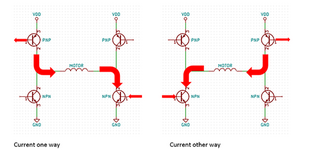engr_joni_ee
Advanced Member level 3
I have stepper motor MOTS4/SP 2.5A 1.8° which is also suitable for (3D printer): Velleman K8200 MOTS4/SP. This motor is rated for 3.1 V.
Is it possible to drive the this stepper motor with ULM2003 and PIC 16F Microcontroller at 5 V ? If the voltage limitation is absolute 3.1 V then how can I connect this stepper motor having 3.1 V rating with ULM2003 and PIC 16F Microcontroller which are operating at 5 V ?
Is it possible to drive the this stepper motor with ULM2003 and PIC 16F Microcontroller at 5 V ? If the voltage limitation is absolute 3.1 V then how can I connect this stepper motor having 3.1 V rating with ULM2003 and PIC 16F Microcontroller which are operating at 5 V ?
